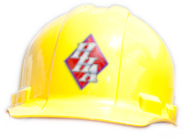Each year, hundreds of people are killed and thousands hospitalized by exposure to carbon monoxide — an invisible, odorless gas that can seep into homes from faulty furnaces or poorly ventilated generators.
It’s important to install a CO alarm and know the symptoms of CO poisoning.
Like smoke detectors, wall-mounted CO detectors save lives and take only minutes to install, said University of Georgia Cooperative Extension Housing Specialist Pamela Turner.
The incomplete burning of fuels, like natural gas, oil, kerosene, wood, charcoal and propane, produce carbon monoxide. Poorly maintained furnaces and boilers, problems with ventilation and malfunctioning water heaters can all inadvertently expose people to CO poisoning.
CO is also produced by backup generators that many families use during power outages. Generators should never be used indoors or inside a garage. When running, generators should be kept at least 20 feet away from a house or building to keep the exhaust from seeping back indoors.
Since CO is odorless and colorless, people don’t often know that the gas is inside their home until someone becomes ill. Often the symptoms of CO poisoning — headache, dizziness, weakness, nausea, vomiting, chest pain and disorientation— are hard to distinguish from common ailments like the flu, Turner said. People who are sleeping or intoxicated can succumb to CO poisoning before they know they’re experiencing symptoms.
“The good news is that it is an avoidable problem,” Turner said. “Maintaining appliances and heating systems is a good place to start, but CO alarms are still important to help alert building occupants in case those heating systems fail.”
Whether you own or rent your home, it is important to have a working CO alarm in addition to smoke detectors. Several models are available that can be plugged into standard wall outlets or mounted on the wall near sleeping areas. Select one that has a battery backup. The cost of a CO alarm is typically between $20 and $40.
More than half of U.S. states have laws requiring CO alarms in newly built single-family homes and apartments, but most don’t have laws addressing older and existing homes, which may have older heating systems more likely to have CO leaks.
This is not just an issue in the U.S., Turner said. CO poisoning is a problem worldwide, and installing alarms in schools and homes is seldom a standard practice.
For that reason, it is important for consumers to advocate for their own safety and the safety of their families. To find out more about CO poisoning and CO alarms, visit www.cdc.gov/co or www.epa.gov/indoor-air-quality-iaq.
(Merritt Melancon is a news editor with the University of Georgia College of Agricultural and Environmental Sciences.)
Credit source http://www.onlineathens.com/local-news/2018-01-05/carbon-monoxide-danger-peaks-dead-winter



